Watercolour Tutorial: Capture the Atmosphere and Light in a Street Scene
Street corner in Pézenas by Nicholas Poullis
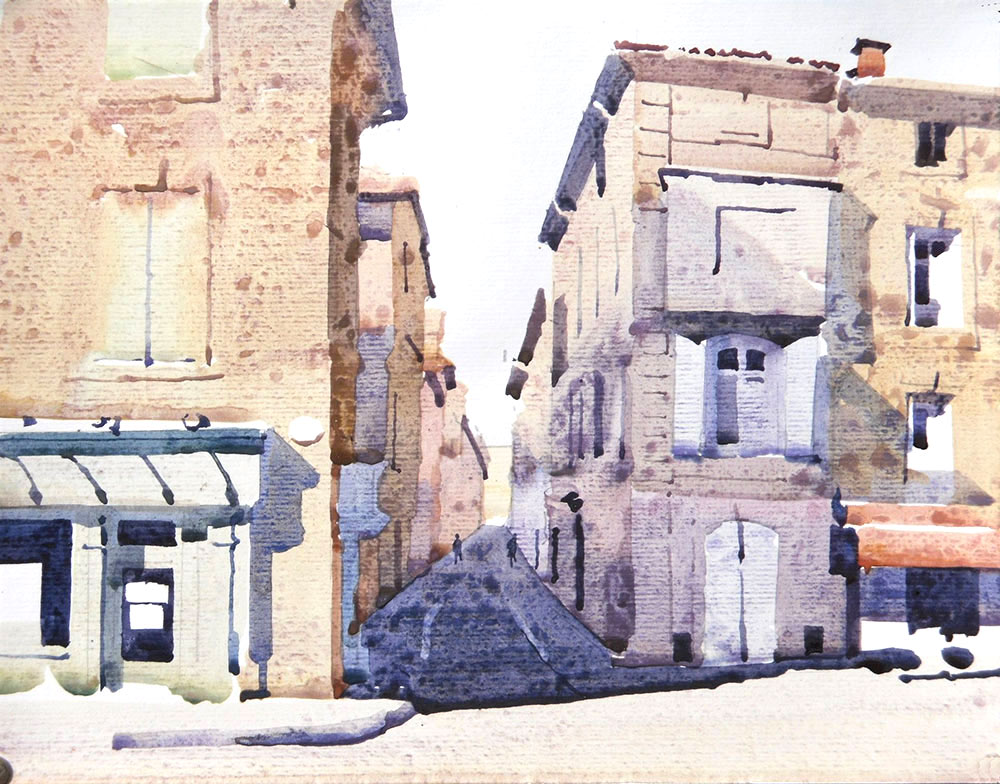
My philosophy towards painting is simple – I try and capture the subject that has inspired me, what identifies it, the atmosphere and light. While I do not impose myself on a subject I try to use selected elements of it to create a defining image of it. The technical picture making aspects – composition, colour, balance and detailing help me to achieve this and help me give the painting focus.
Every mark made in watercolour is definitive and watercolour works like no other medium. Freshness is crucial so the watercolour should sit on the surface of the paper and not be muddied by overworking. Water colour is in many ways counter intuitive in that it makes intuitive sense that if I do more work on a painting the better it gets – in fact in watercolour quite the opposite is usually true. It is crucial that each layer be put down well and correct and then not altered and tinkered with which then reduces freshness.
This painting demonstrated shows the whole process from choice of subject and then the technical application of paint from start to finish.
Step by step
With representational art, the choice of subject matter is very important. There are views that look nice but do not make good pictures and there are other subjects that are both attractive and interesting enough to hold your interest and have enough elements to them that make a good subject.
‘Street corner Pezenas’ is a good subject for a number of reasons. The view has depth, light direction giving from and contrasting architecture and interesting shapes.
I am using a variety of traditional techniques including the wash, the graduated wash and wet on dry.
Materials
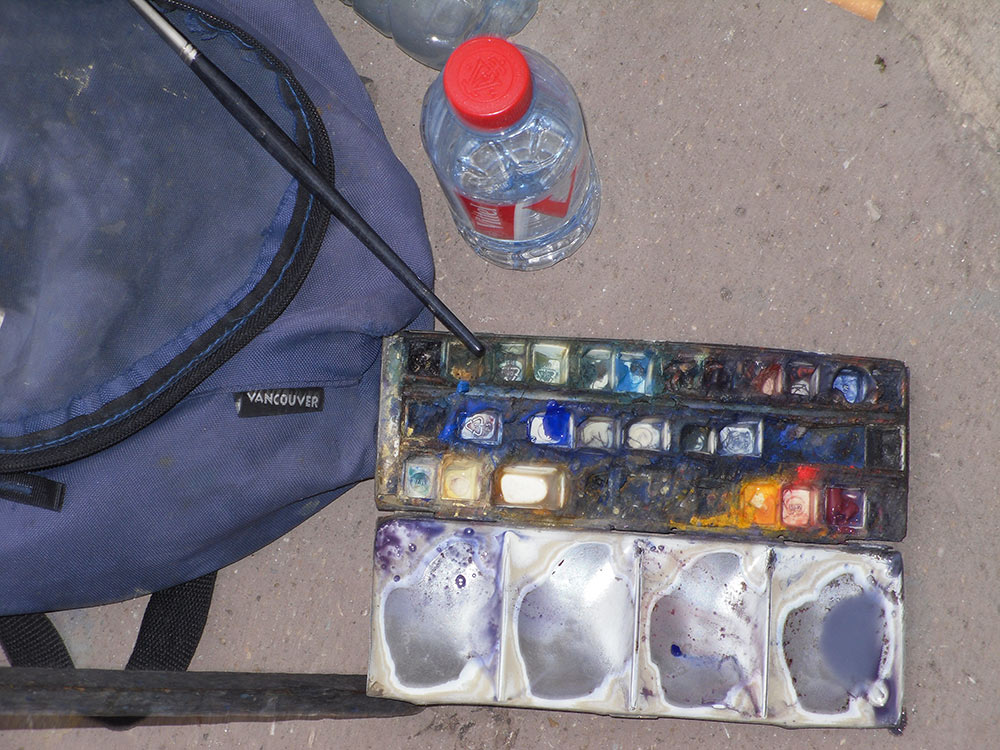
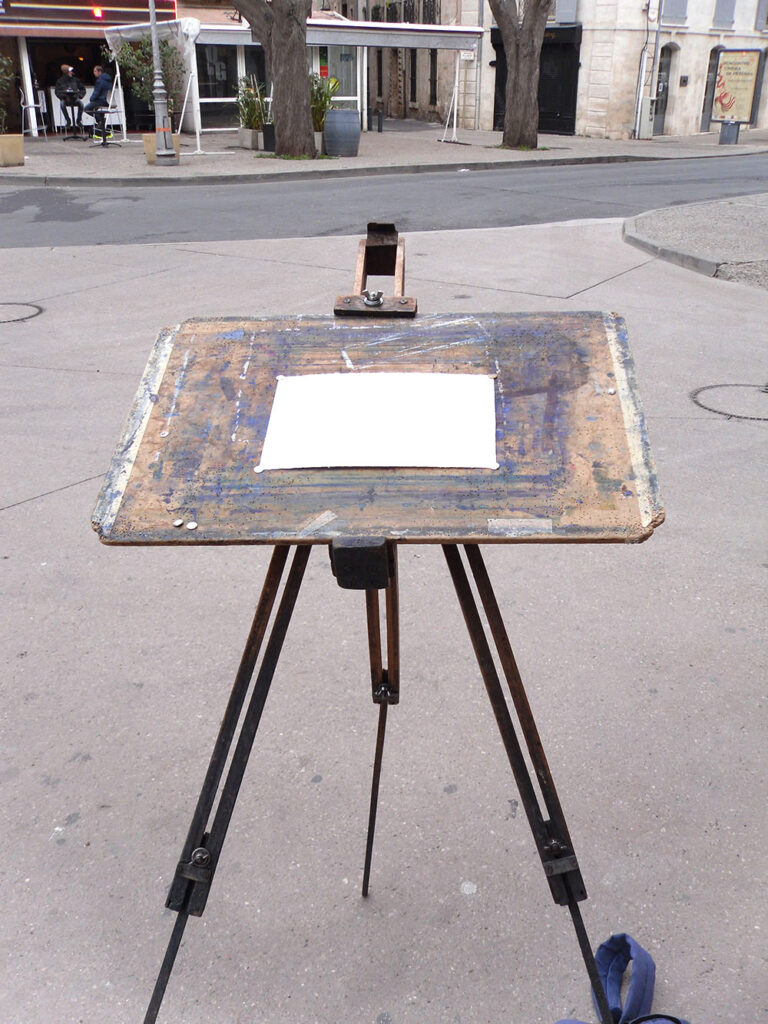
- Watercolours:
- Cobalt blue
- Cobalt blue deep
- French Ultramarine blue
- Naples yellow
- Raw sienna
- Viridian
- Cadmium Red
- Red Iron Oxide
- Potters Pink
- Brushes
- Large squirrel hair Round 5 & 8
- Pencil 2B
- Light weight easel
- Paper – 140lb Rough 10 X 12 inches
Demonstration
Step 1
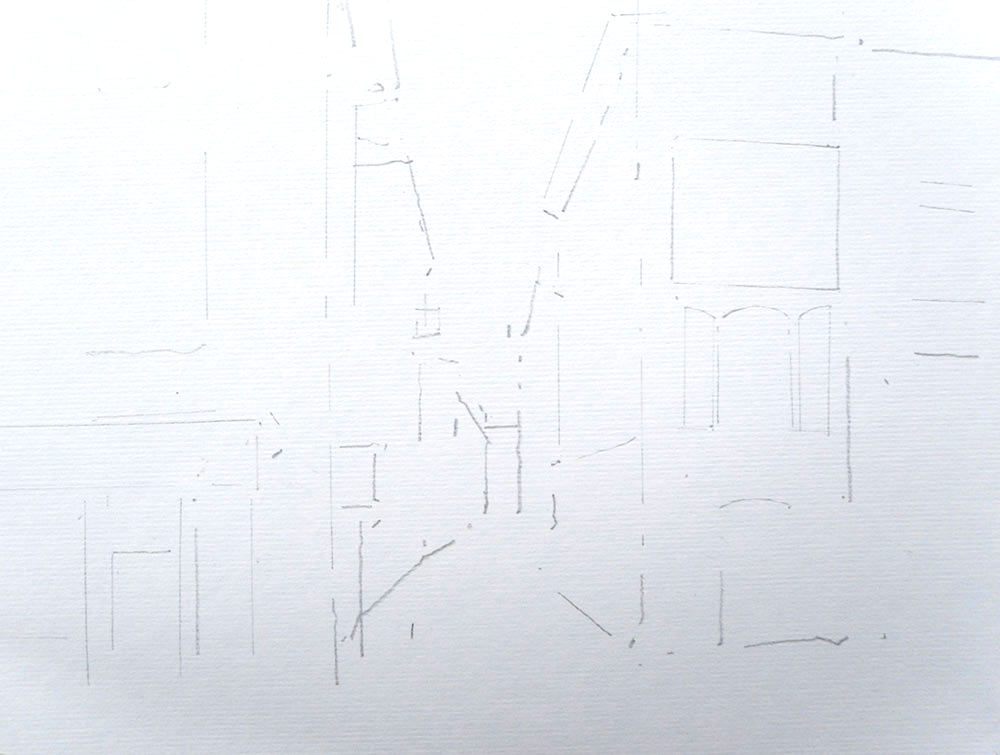
The drawing defines the structure and composition, proportions and perspective of the painting. The drawing is simple, I can draw in more if I need a particular shape, at a later stage.
Step 2
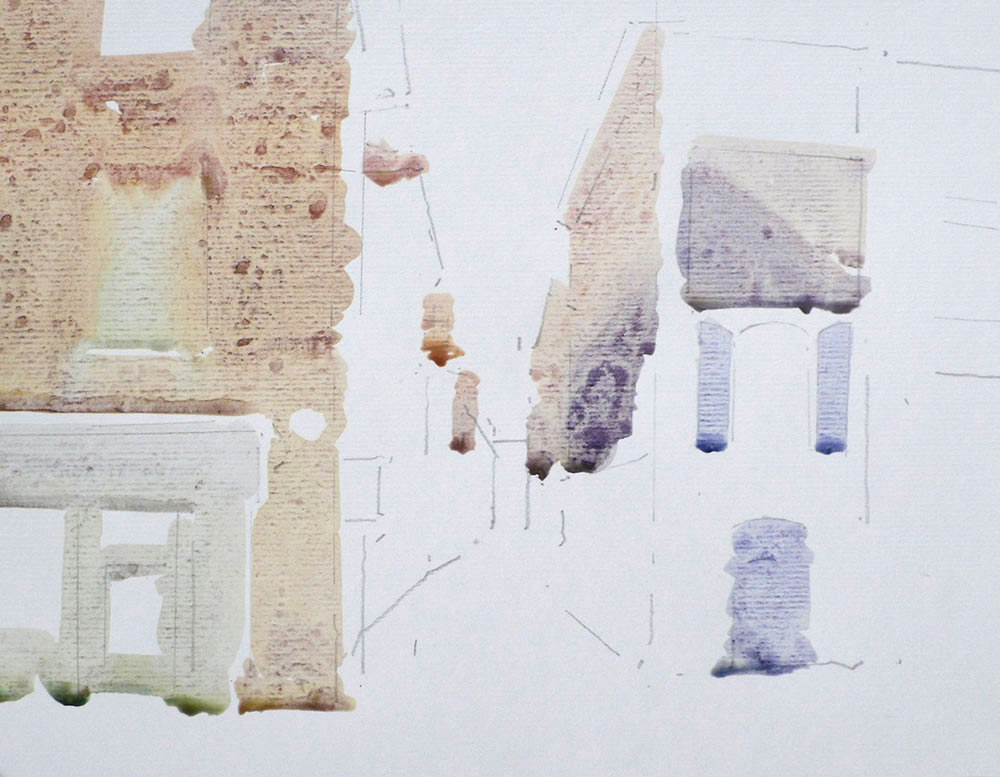
Working from light to dark I start putting in the shapes. Light shapes are defined by painting around with a darker tone. These have to dry completely before subsequent washes are put down to avoid bleeding.
Step 3
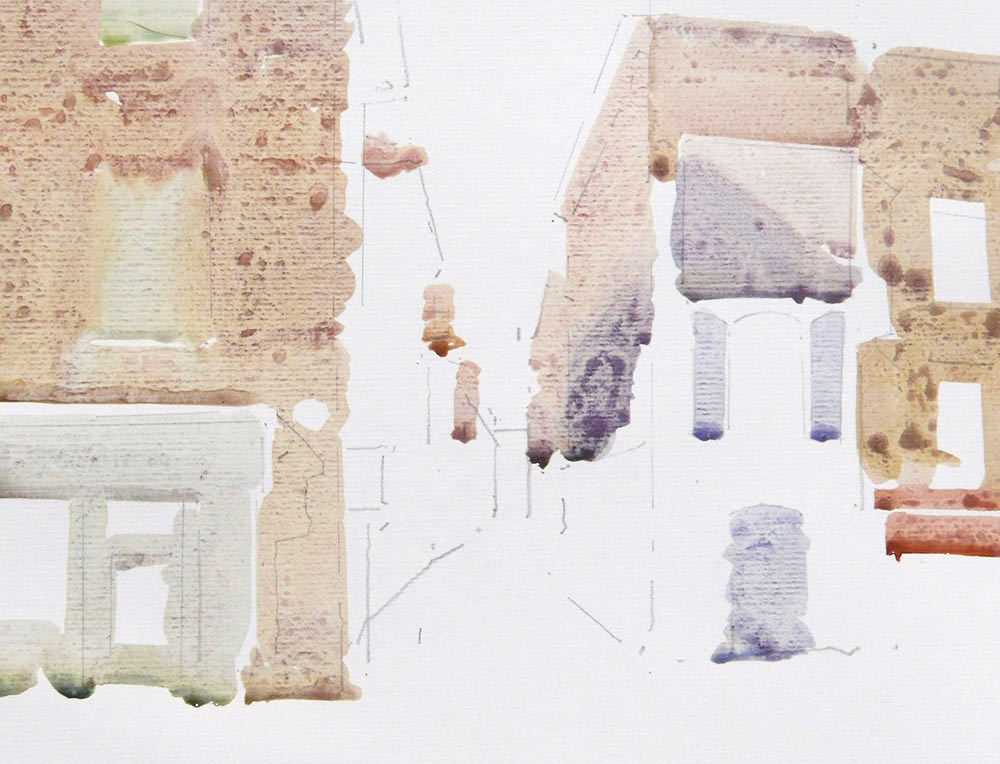
More light and slightly stronger tones are put down to try and define forms and define the subject.
Step 4
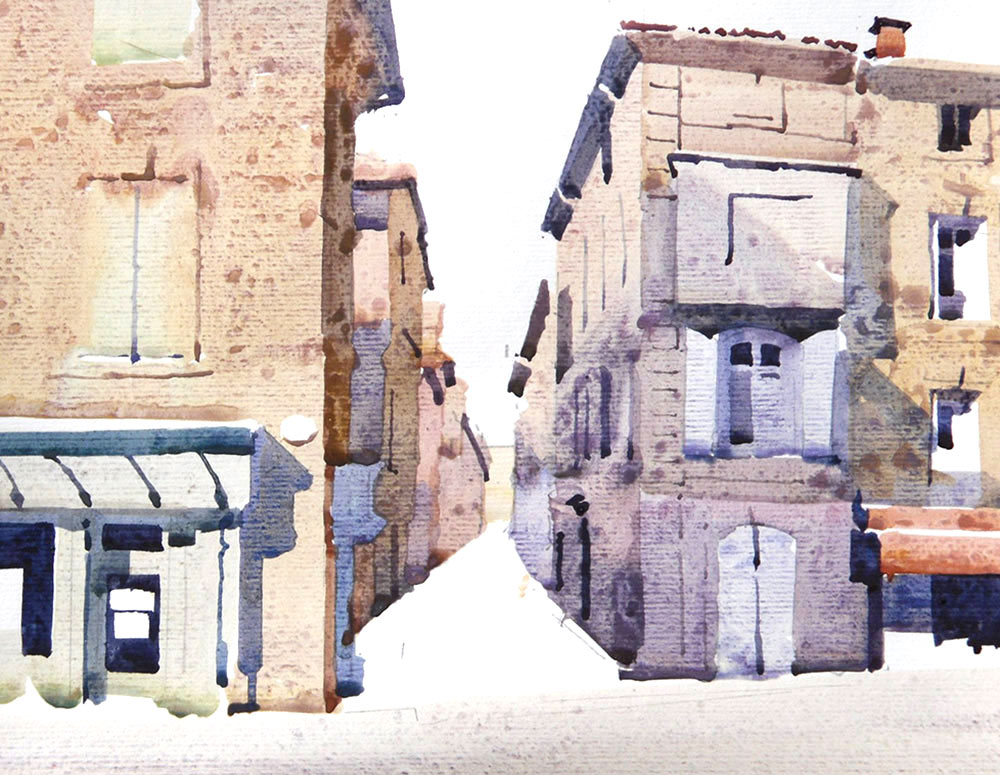
Darker tones and shadows are put down wet on dry that help create the lighting and gives form to the subject. Depth is created.
Step 5

Details are added to create balance and the darker tones are added. You create light by painting darks. A couple of figures are added to give scale and a little activity – it was a quiet day.
My design and composition tactics
Without a good composition the painting is sunk before it begins. The usual rules can be followed. I prefer to go on what looks right.
- Try to find natural compositions while choosing a subject. Most subject will have a view that lends itself to a composition in a picture – try to think in terms of areas of interest.
- Place areas carefully on your paper. An area of interest is usually best placed towards the center of a painting. Avoid placing features too close to the edges, particularly the bottom edge.
- Choose a subject with a light and dark side. A subject needs contrast – with poor lighting the subject can become flat and features that would be interesting with good lighting, can be lost.


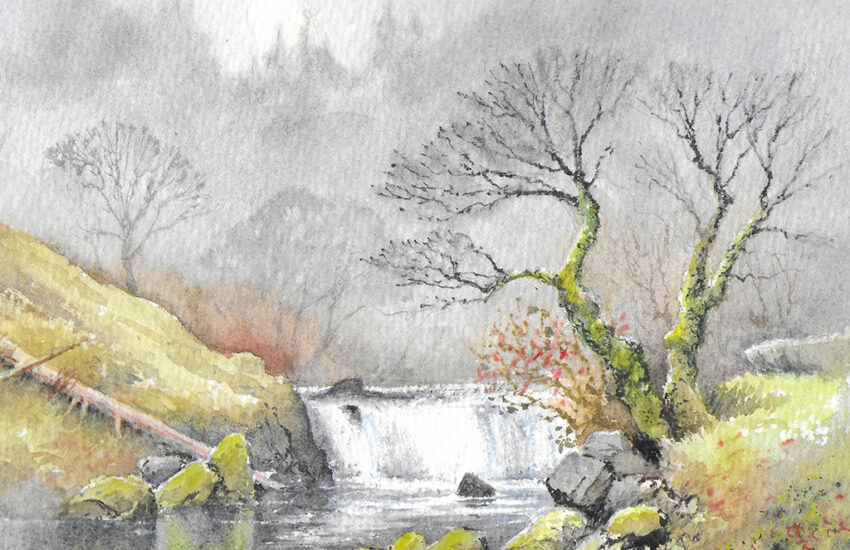
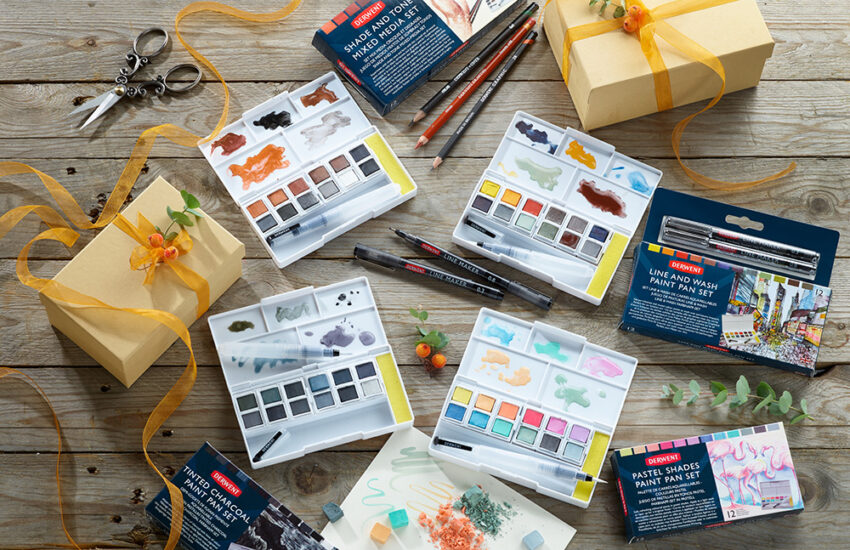
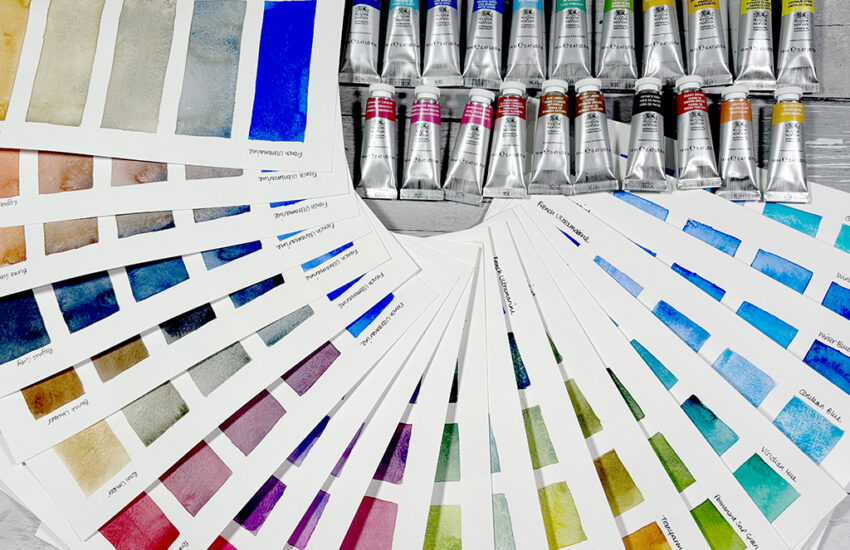
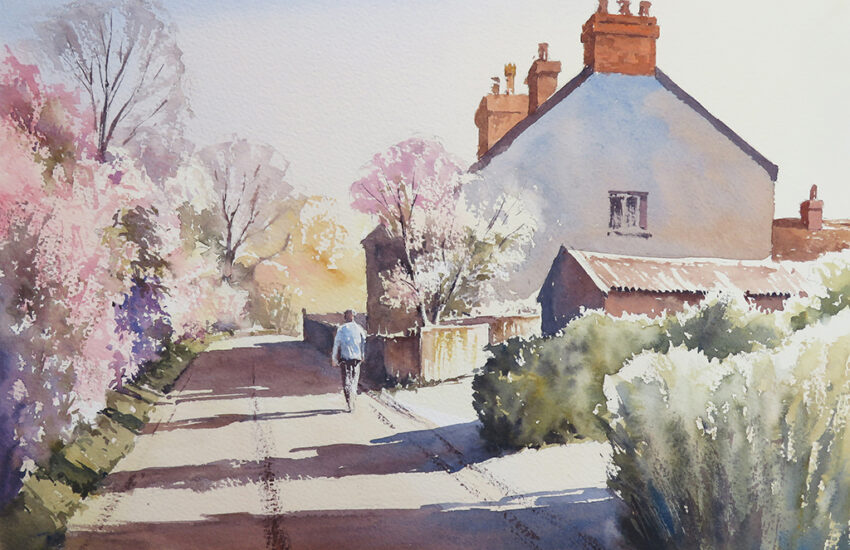
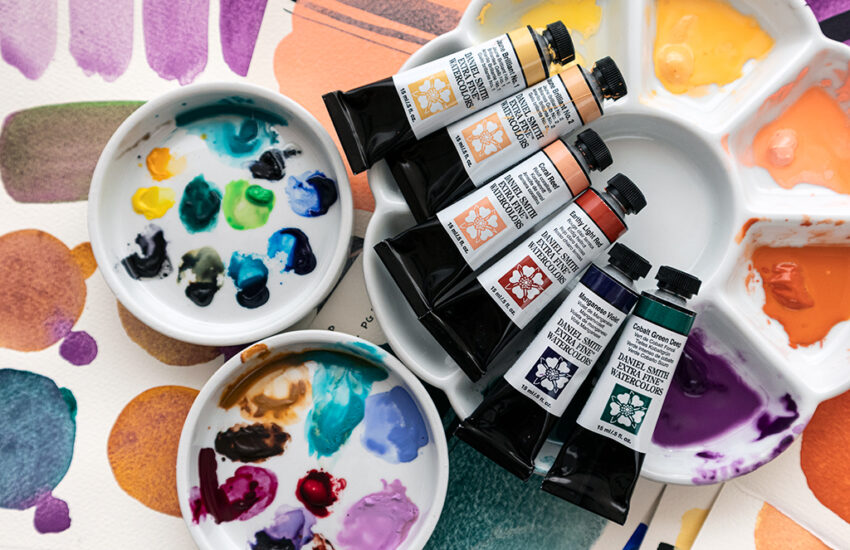
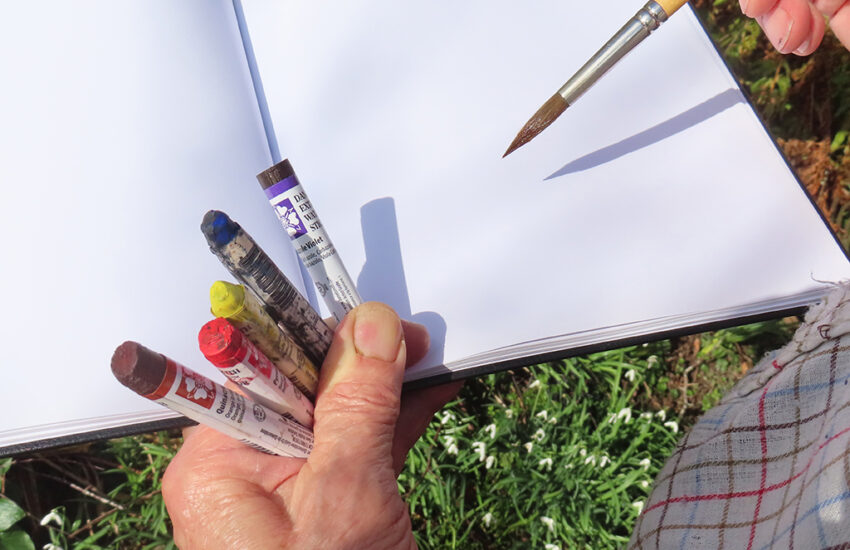


These blogs are an excellent way of connecting with your customers and the public generally.
The more objective and experience based the information, the more useful it is – and the more the punters will trust Ken Bromley & Co. I’m a very amateur painter – probably typical of 85% of your customers; I only took it up again when I retired, but I was a long time in business in Manchester and can usually tell a ‘plug‘ from advice. Keep advising, it is greatly appreciated.
Typical Potential subjects: Use of different types/softness of pencils for different types of sketches/paintings, ditto papers/grounds for different types of work, when is a painting/sketch finished? The topics are endless.
As I see KB, you are the amateur’s supplier – and we need someone like KB. Our M&S!
Brilliant, well put. I’m in Canada, have been an artist all of my life, and still love hearing and seeing the various insights others bring to the practice of art. I love these blogs and emails from Ken Bromley’s. Especially welcome these days as a diversion from the other stressors going on. Thank you!